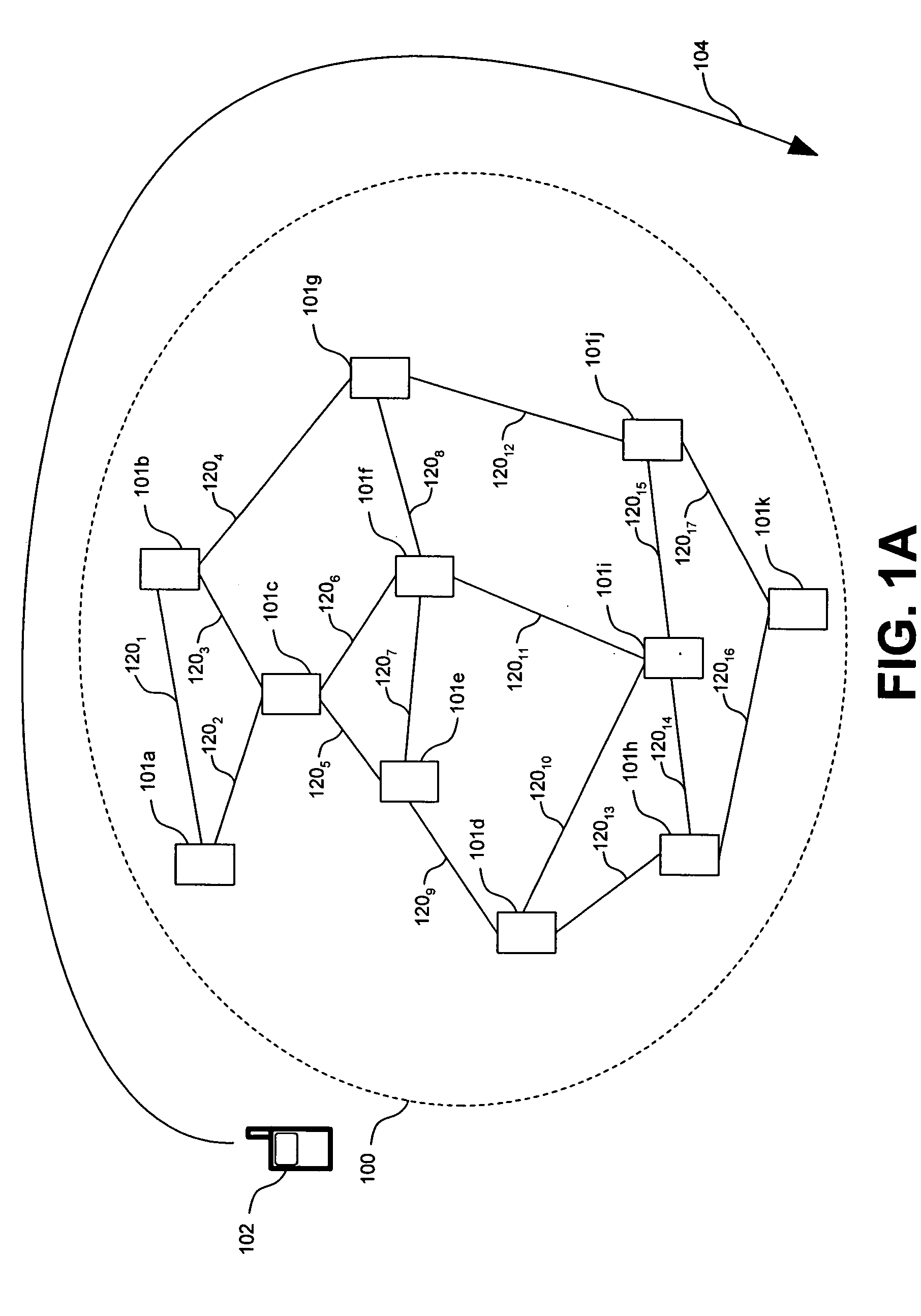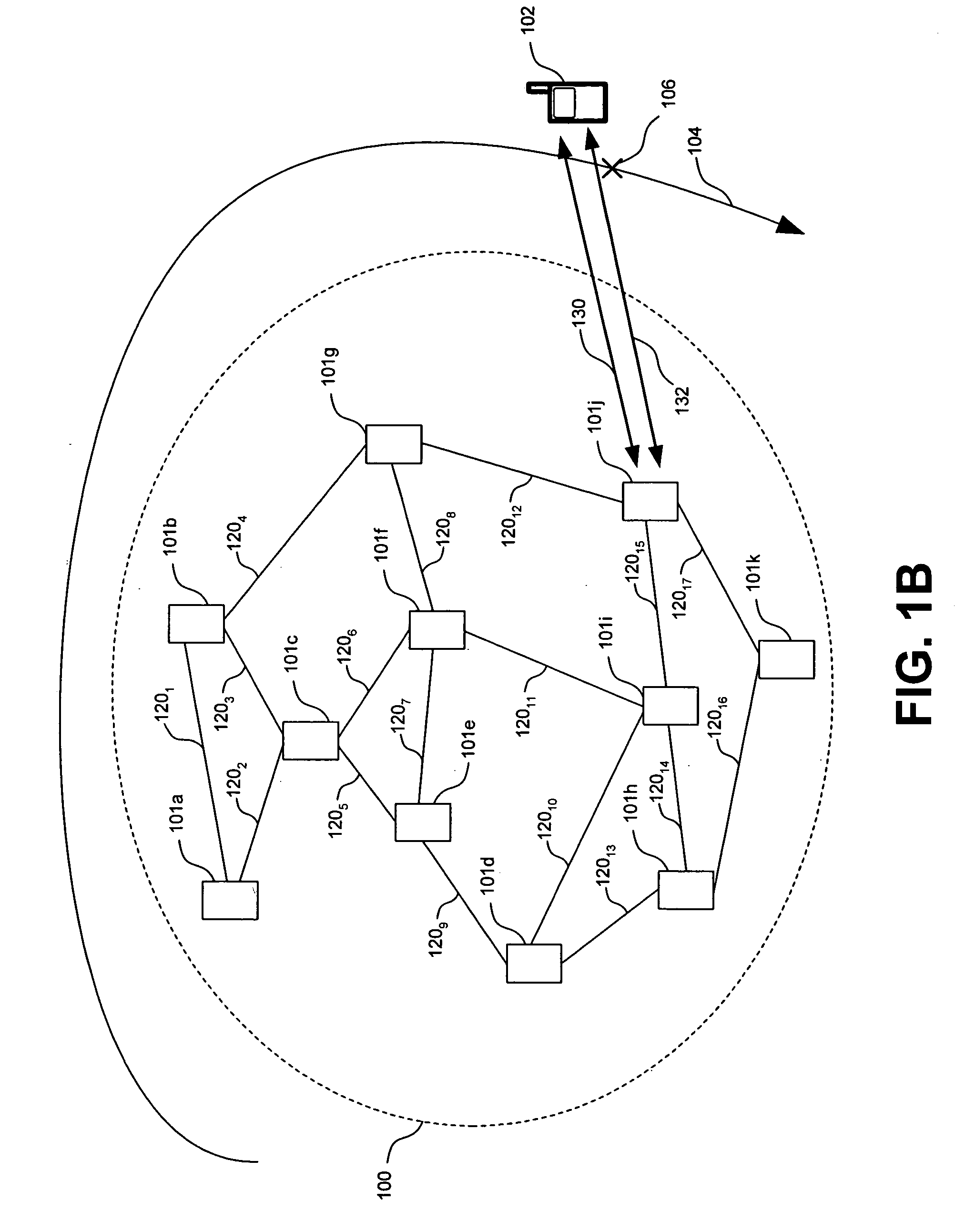Techniques for ad-hoc mesh networking
a mesh network and network control technology, applied in the field of wireless communication, can solve the problems of inefficient transfer of network control information by higher data rate technologies (e.g., wlan and uwb), change in various network characteristics, etc., and achieve the effect of maximizing the efficiency of mobile ad-hoc multi-hop networking
- Summary
- Abstract
- Description
- Claims
- Application Information
AI Technical Summary
Benefits of technology
Problems solved by technology
Method used
Image
Examples
Embodiment Construction
I. Operational Environment
[0025] Before describing the invention in detail, it is helpful to describe an environment in which the invention may be used. Accordingly, FIGS. 1A-1C are diagrams of an exemplary operational environment involving an ad-hoc multihop network 100. Network 100 includes a plurality of nodes 101. Each node 101 may have a media access control (MAC) address, such as an Internet Protocol (IP) address. Accordingly, each node 101 may be represented in the network by its address.
[0026] As shown in FIGS. 1A-1C, communications paths 120 exist between various nodes 101. These paths are used for the exchange of data and control information. Each communications path 120 may include multiple links, such as separate control and data links. The data links may be used for the transfer of data associated with user applications. The control links may used to exchange control information regarding network 100 and to establish data links. In addition, the control links may be us...
PUM
 Login to View More
Login to View More Abstract
Description
Claims
Application Information
 Login to View More
Login to View More - R&D
- Intellectual Property
- Life Sciences
- Materials
- Tech Scout
- Unparalleled Data Quality
- Higher Quality Content
- 60% Fewer Hallucinations
Browse by: Latest US Patents, China's latest patents, Technical Efficacy Thesaurus, Application Domain, Technology Topic, Popular Technical Reports.
© 2025 PatSnap. All rights reserved.Legal|Privacy policy|Modern Slavery Act Transparency Statement|Sitemap|About US| Contact US: help@patsnap.com



